100 faces of Bayon
Besides Angkor Wat Bayon is for me the most impressive Khmer temple in the temple-complex of Angkor. It is the centre of Angkor Thom, which was constructed in the last period of the rule of the Kings of Angkor. Jayavarmann VII started a 30 year contraction period from 1181 on.
The Bayon’s most distinctive feature is the multitude of serene and massive stone faces on the many towers which jut out from the upper terrace and cluster around its central peak. Already entering the compound of Angkor Thom the gate features these faces, looking in all four directions.
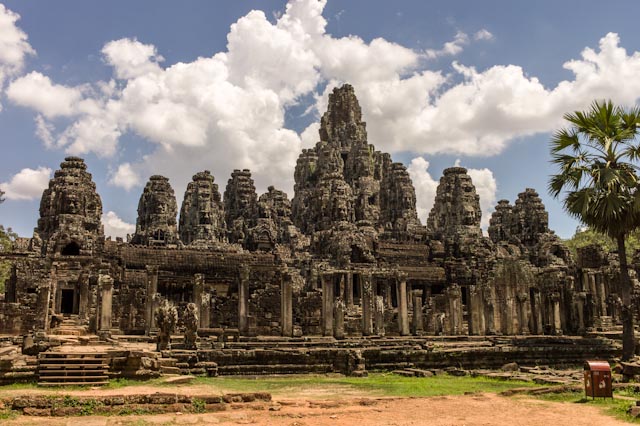
Approaching Bayon one looks at a extremely complex structure. It uses a mass of face-towers to create a mountain of ascending peaks. There were originally 49 towers, today only 37 are standing.
Walking further up towards the centre past and present blends; Bayon is still worshiped as a buddhist temple. Actually Bayon was the only Angkorian state temple to be built primarily as a shrine dedicated to the buddha. But of course there are many signs also of hindu deities.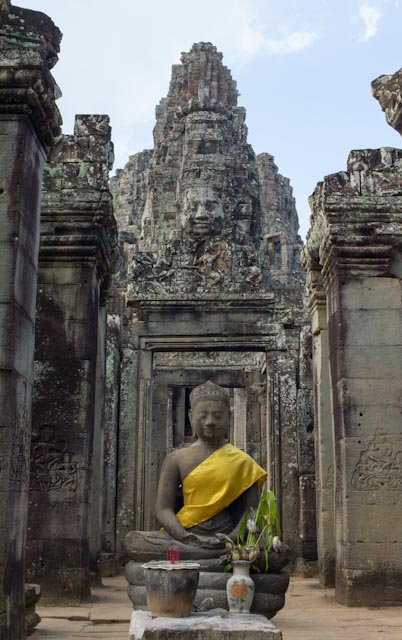
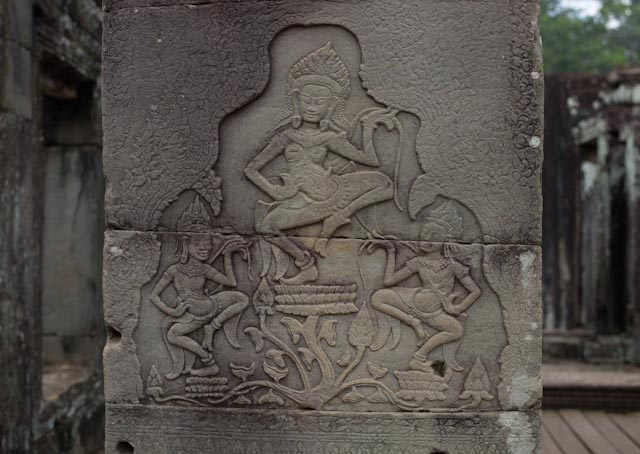
Basically the towers are posted at the corners and the middle of the square temple layout. Because of the temple structure, which leads to higher levels towards the centre there are a lot of different perspectives such as ascending faces.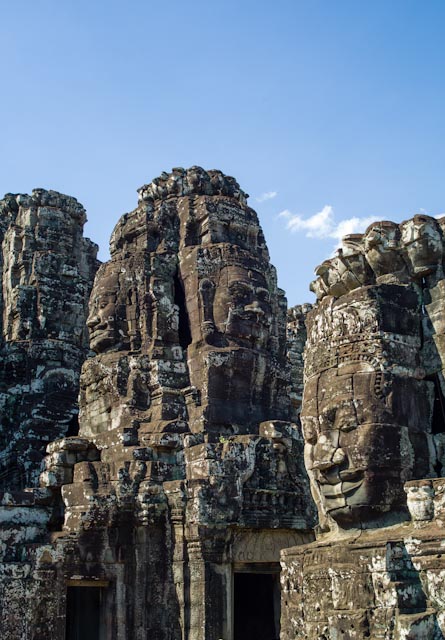
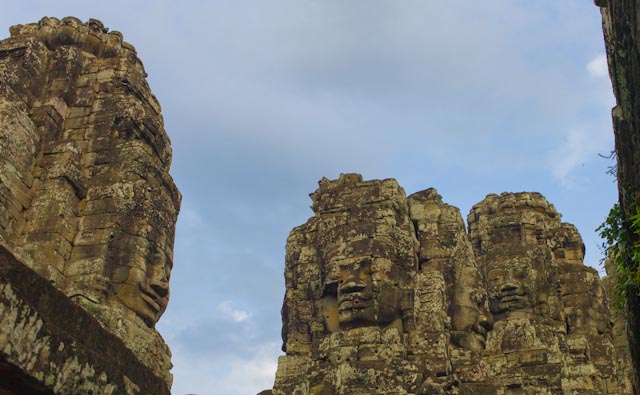
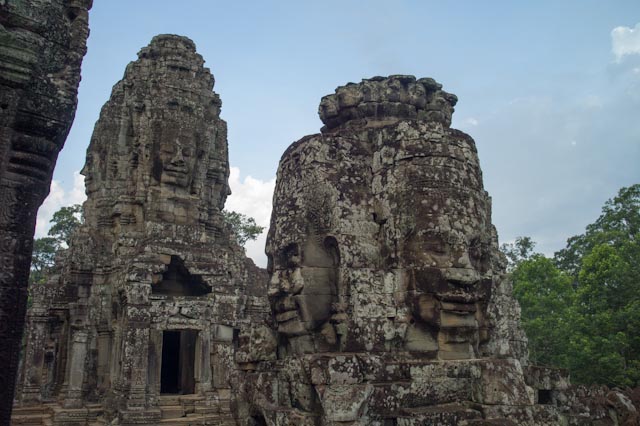
The following three pictures are good examples of well preserved towers; part of the ornaments its still visible as well as their foundation on the structure, in the third picture safeguarding one of the entrances.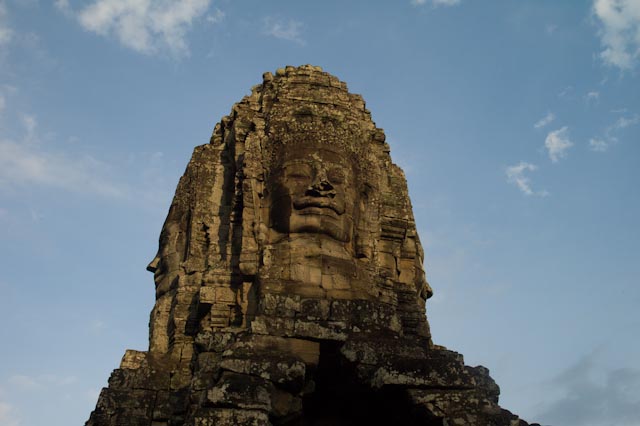
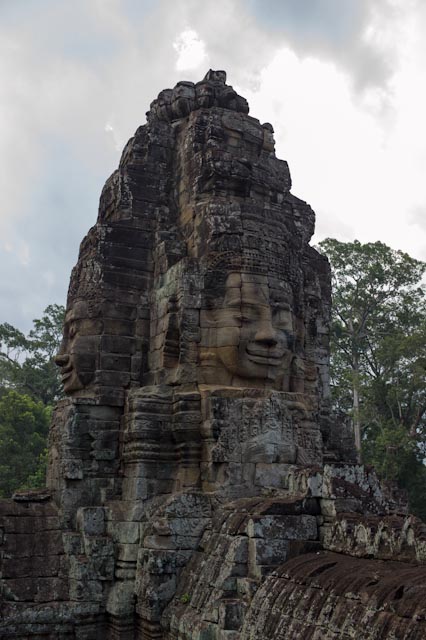
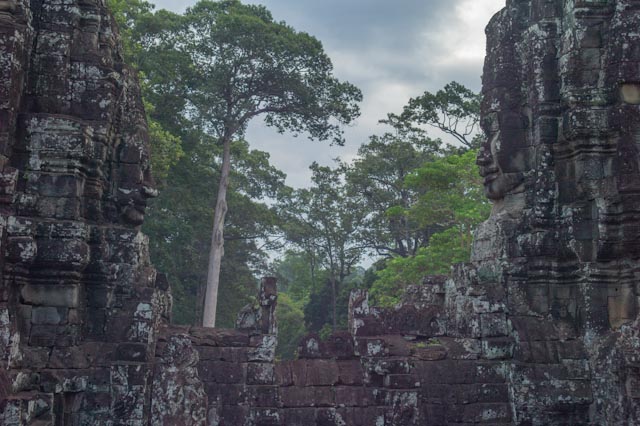
Walking inside the temple from many windows one see faces looking outside.
The similarity of the gigantic faces on the temple’s towers to other statues of the king has led many scholars to the conclusion that the faces are representations of Jayavarman VII himself. Comparing faces makes this conclusion however difficult.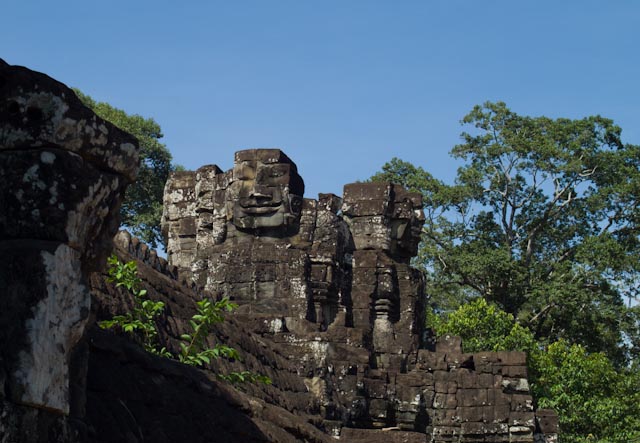
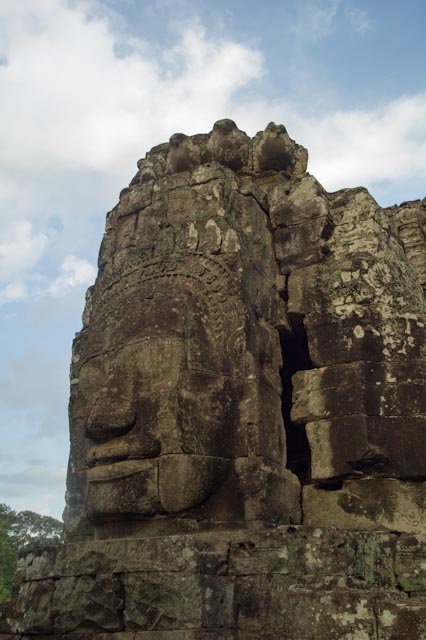
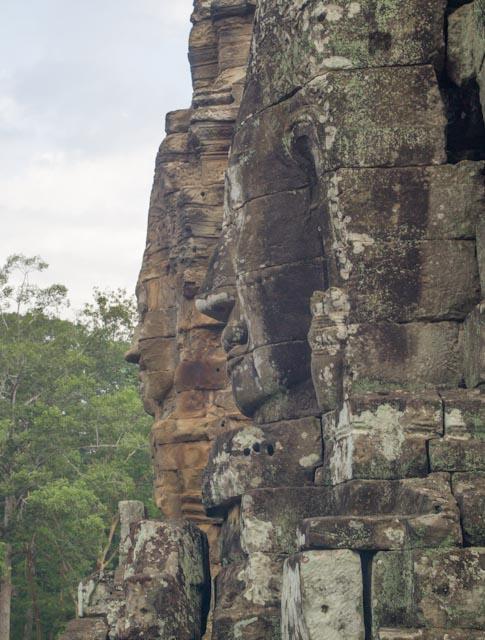
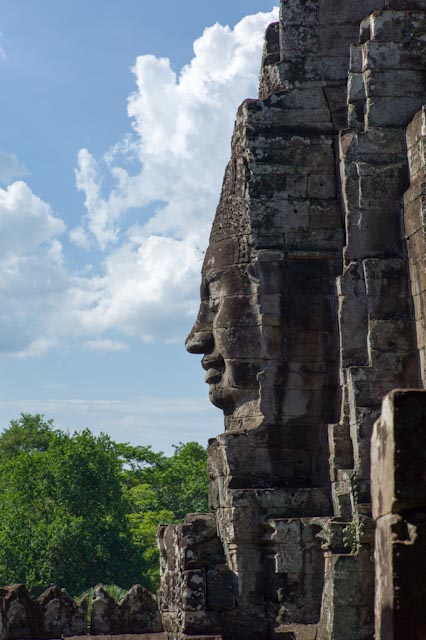
Bayon is known also for two impressive sets of bas-reliefs, which present an unusual combination of mythological, historical and mundane scenes.All scenes featured events of the civil war.Here are just four scenes, which show the parade, chinese soldiers– notice the beards–, a scene of killing and a fish snaping after a deer.
With it´s density and constant changing perspectives Bayon was to me equally impressive as Angkor Wat.
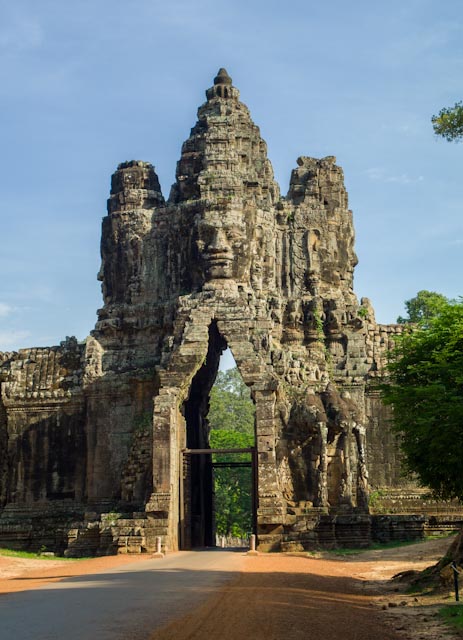
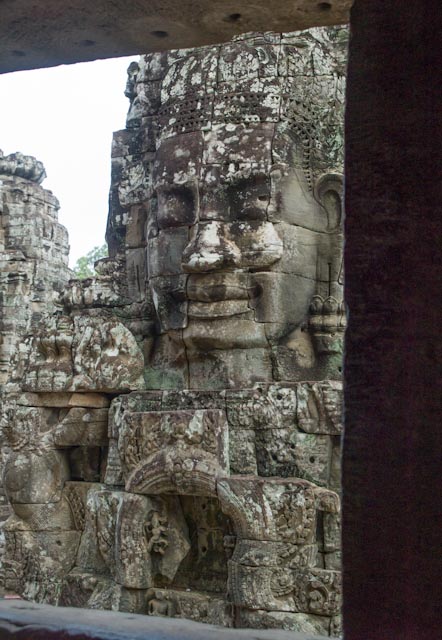
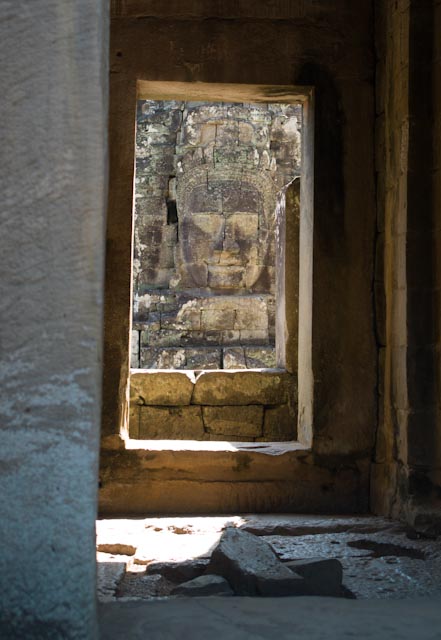
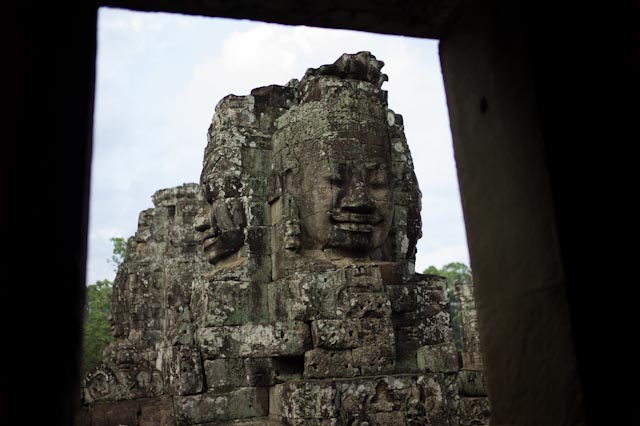
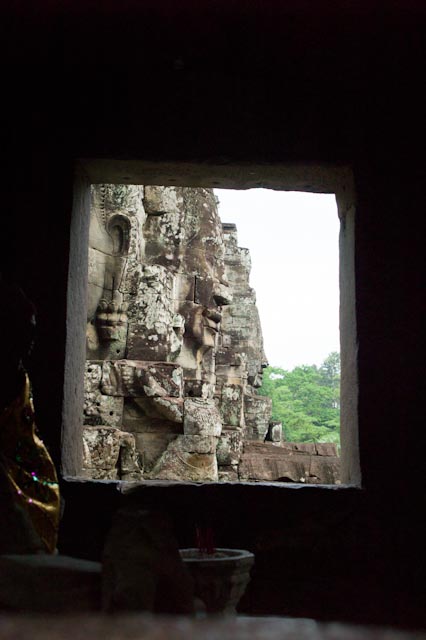

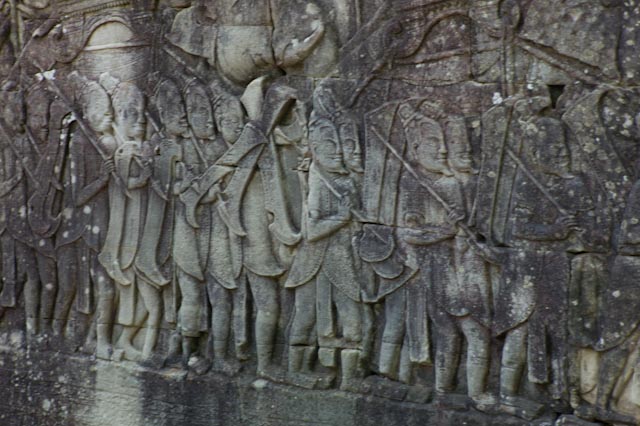
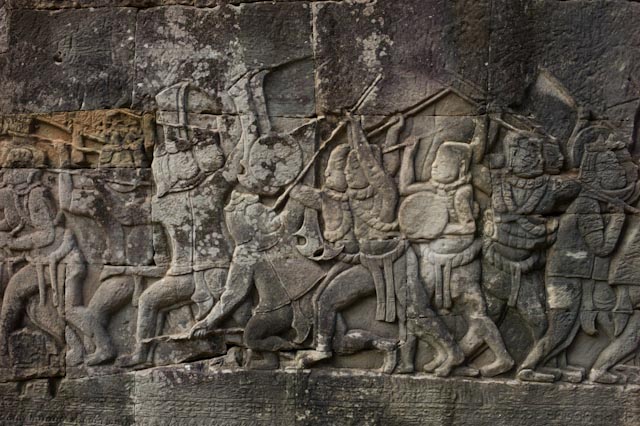
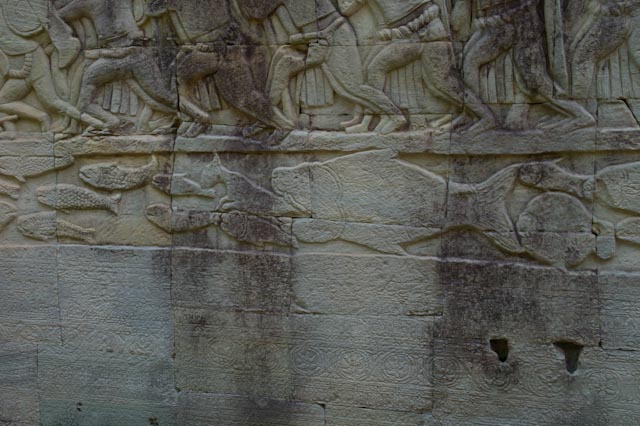
Leave a Reply